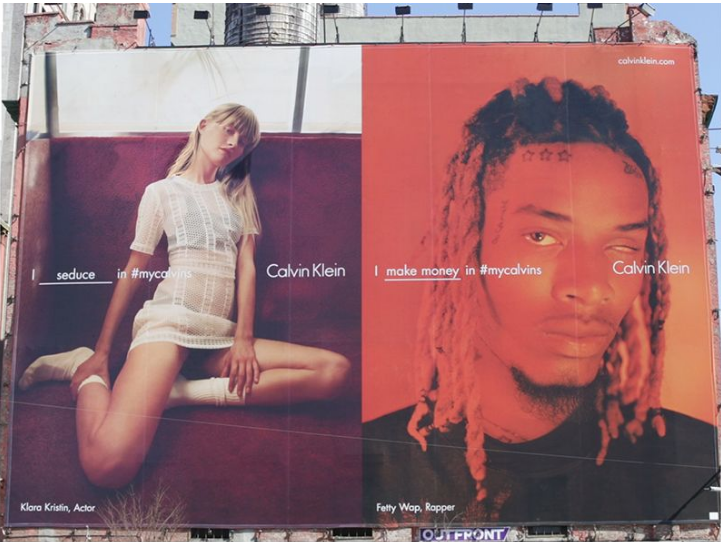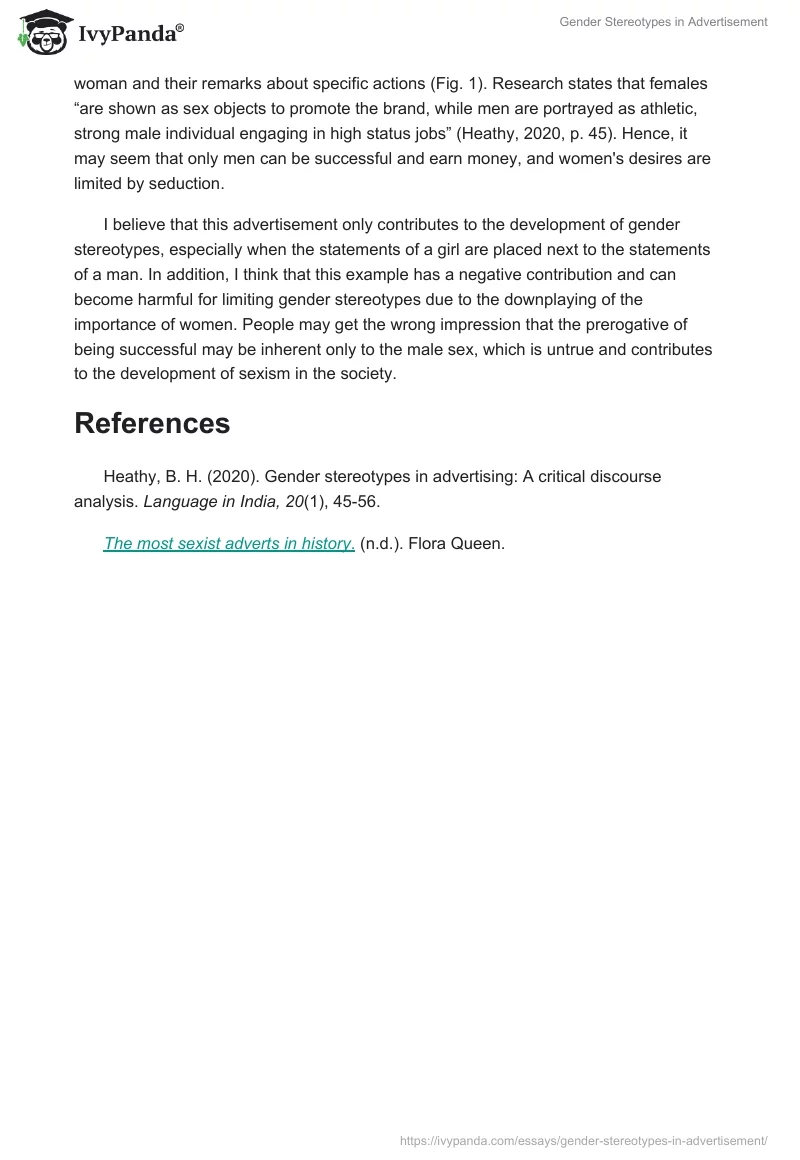Such a problem as gender stereotypes is one of the most urgent in modern society. Despite many years of struggle for equal rights for both sexes, prejudices towards the female population still exist. In addition, they can often fail not only in communication but also in aspects such as advertising. This is especially dangerous because advertising companies are characterized by reaching a large population. Therefore, the more people see the picture, the more the idea that the manifestation of gender stereotypes is the norm will take root in society.

Furthermore, this work, as an instance of gender-biased advertising, explores the example of the add of the world-famous Calvin Klein company. It depicts a man and a woman and their remarks about specific actions (Fig. 1). Research states that females “are shown as sex objects to promote the brand, while men are portrayed as athletic, strong male individual engaging in high status jobs” (Heathy, 2020, p. 45). Hence, it may seem that only men can be successful and earn money, and women’s desires are limited by seduction.
I believe that this advertisement only contributes to the development of gender stereotypes, especially when the statements of a girl are placed next to the statements of a man. In addition, I think that this example has a negative contribution and can become harmful for limiting gender stereotypes due to the downplaying of the importance of women. People may get the wrong impression that the prerogative of being successful may be inherent only to the male sex, which is untrue and contributes to the development of sexism in the society.
References
Heathy, B. H. (2020). Gender stereotypes in advertising: A critical discourse analysis. Language in India, 20(1), 45-56.
The most sexist adverts in history. (n.d.). Flora Queen.


